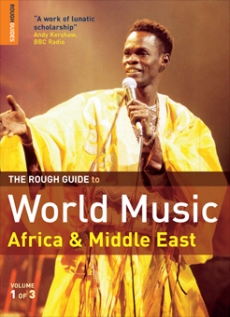| Éditeur : Penguin Books | Date & Lieu : 2006, London |
| Préface : | Pages : 675 |
| Traduction : | ISBN : 978-1-84353-551-5 |
| Langue : Anglais | Format : 170x235 mm |
| Thème : Musique |
|
Présentation
|
Table des Matières | Introduction | Identité | ||
 THE ROUGH GUIDE to World Music Since The Rough Guide to World Music first appeared in 1994, the World Music scene has grown dramatically. Vast numbers of CDs are released each month, artists from across the world perform regularly in major concert halls in the “West”, and the BBC has created the annual Awards for World Music (The Planets). In addition, ease of travel makes it feasible for those in Europe and America to go and experience the music of the world, in person, in situ. Now African music enthusiasts don’t just hang out around Sterns record shop in London and listen to Andy Kershaw on the radio – they go to the Essaouira Festival in Morocco, which has become a sort of Gnawa Woodstock attracting 400,000 people each year, or to the celebrated Festival in the Desert near Timbuktu. Music can be a window on and a passport to the world. | |||||
|
Since The Rough Guide to World Music first appeared in 1994, the World Music scene has grown dramatically. Vast numbers of CDs are released each month, artists from across the world perform regularly in major concert halls in the “West”, and the BBC has created the annual Awards for World Music (The Planets). In addition, ease of travel makes it feasible for those in Europe and America to go and experience the music of the world, in person, in situ. Now African music enthusiasts don’t just hang out around Sterns record shop in London and listen to Andy Kershaw on the radio – they go to the Essaouira Festival in Morocco, which has become a sort of Gnawa Woodstock attracting 400,000 people each year, or to the celebrated Festival in the Desert near Timbuktu. Music can be a window on and a passport to the world. This third edition of The Rough Guide to | ||||